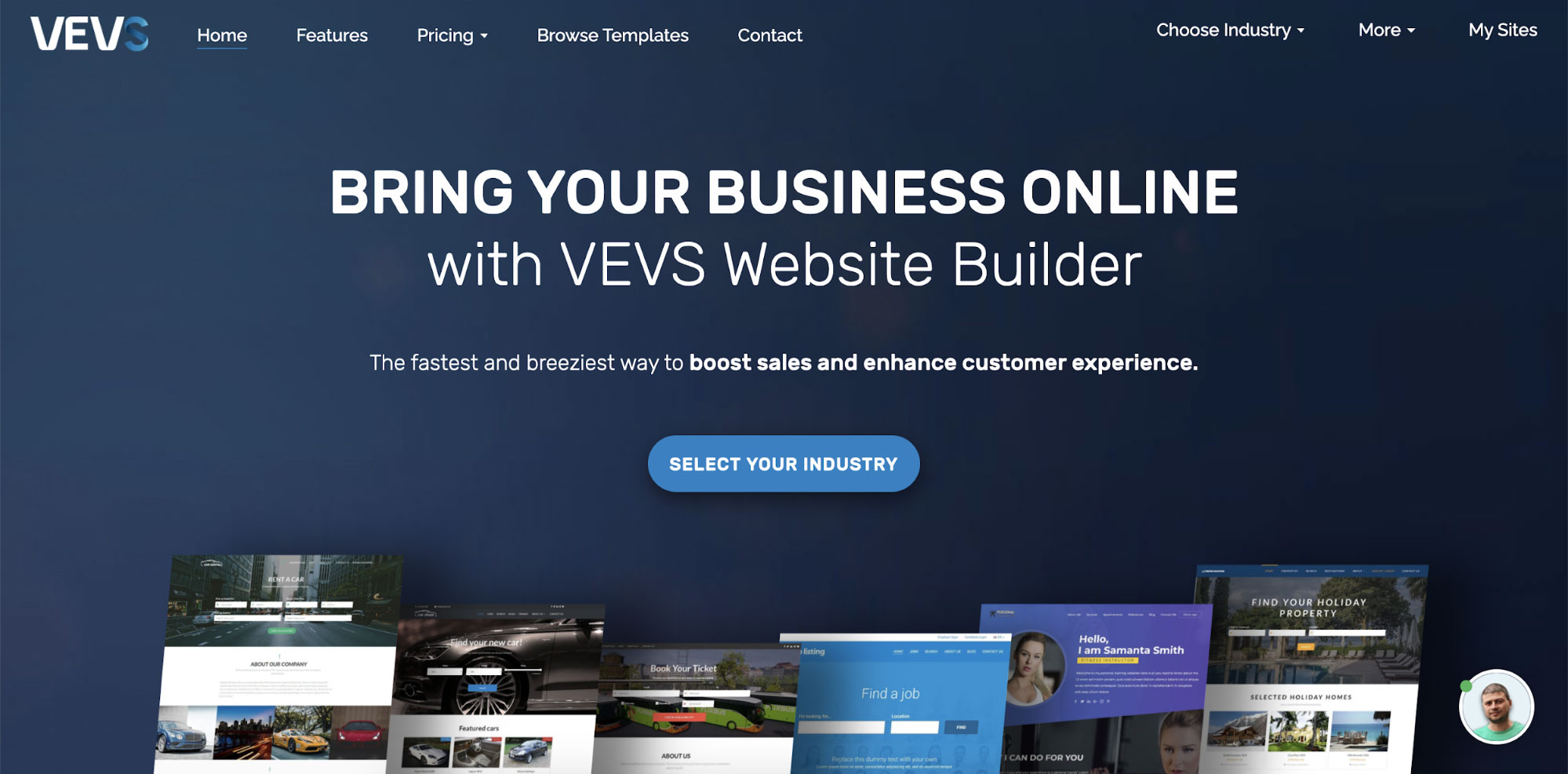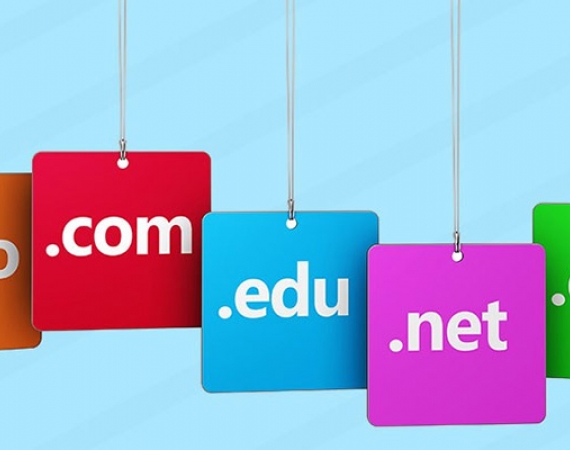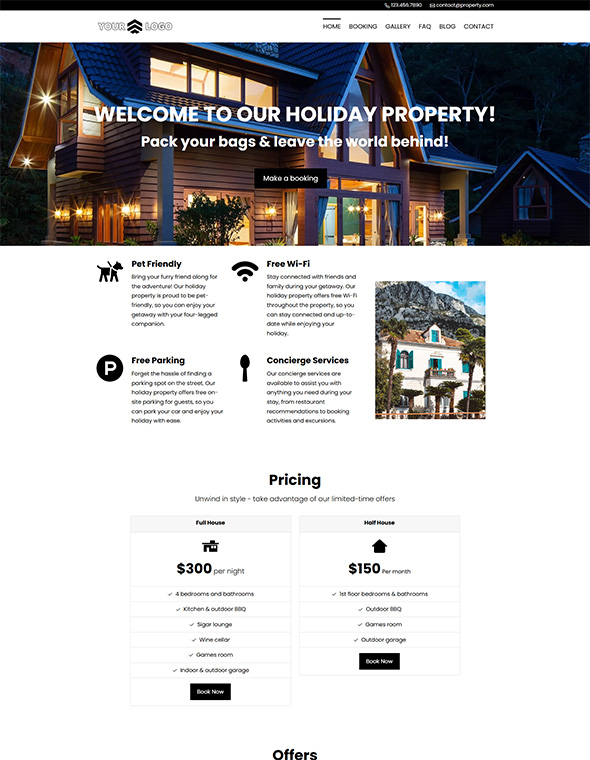A website homepage is like a shopfront. It is likely to be the first page that a visitor will view, therefore it needs to be on point. A successful website must include a good homepage, making it one of the most important web pages within your site. If you were to try and sell a car that had no windows, a missing door and flat tyres, you will likely not make a sale. The same principle applies to web design. Bad web design scares customers away, but good web design, now that can work wonders for your business. You only get one chance to make a good first impression, so make it count!
In this blog post, we are going to discuss 7 critical features your website homepage should include.
The Importance Of Your Website Homepage
It is a well-known fact that websites can have a huge impact when it comes to helping a business grow and providing exposure for itself. Let’s say, you decide to buy a house and you know exactly which street you want to purchase that house on. On one side of the street is a house that has an unmowed lawn, a driveway full of potholes, boarded up windows and the roof evidently needs replacing. On the other side of the street is a house with a beautiful front lawn, a nicely painted exterior, newly tiled roof, and a vibrant blue door that makes the whole house stand out. Think of your homepage in comparison to these two houses. You want people to ring the doorbell. You want people to consider investing their time and energy in it and finding out more information.
A website homepage is so much more than just another web page on your website. It paints the picture for what visitors can expect from you. It shows the branding, information, design etc. of the business. The homepage is the cover to your book. The contents of it will be analyzed to see whether or not it is worth reading on and finding out more.
Remember, that your homepage is a conversational tool to engage the user, get them interested, and make them want to click onto other web pages. If you fail to make them stay, your digital marketing campaign of bringing them on-site will be wasted.
Feature #1: Logo
Your logo should be visible at the top of your website. After all, it is the core of your business's branding. It is what people remember a business by. It is how they reference it in the future. For most websites, the best position for the logo is in the top left of the website, or the top centre. As you can see from the image below, our logo is placed in the top left of our website. It is big enough to be easily noticed and highly visible, however not too much, in that it interferes with the design and aesthetics of the site. The logo on a website often doubles as a way to click through back to the homepage, so its visibility is very important.
When placing your logo within your website, make sure that it is placed on top of an appropriately coloured background, so it not only stands out but displays clearly.

Feature #2: Visible & Straightforward Navigation
The navigation is another vital feature of any website. It is how a user finds more information, how they reach a contact page, view your services etc. It is very uncommon for a website not to include a navigation bar, but making sure it is visible and straightforward is something that not all websites do correctly.
The navigation menu should be easy to locate and display items that make sense to new visitors. Think of the navigation as a road map- it allows users to easily navigate from web page to web page, giving them a good overview of the content, as well as helping them locate the information they are searching for. In addition to being the most efficient way of helping users to navigate a website, navigation also helps in reducing things such as bounce rates. If it becomes hard for a user to find what they are looking for, they will leave the site, so make sure that navigating your website is as easy and efficient as possible. The navigation bar is a great place to start when looking to achieve this.
We also recommend that you make sure your navigation is responsive, meaning it will display correctly on a range of devices and screen sizes. A “burger menu” is a great way to make sure navigation is responsive for tablets and mobile devices.
Feature #3: Headline
When it comes to what your business offers, there should be no guesswork from the visitor. It should always be clear from the onset exactly what you offer and how you can help. The headline is an effective way of communicating just that. Within a matter of seconds from the visitor clicking onto your website, the headline needs to communicate exactly what you offer.
The headline (often coupled with a sub-headline or paragraph text) should provide a clear, detailed and to the point description of your business, what you do/offer and the products or services you provide. This is often 2-3 sentences of powerful, memorable, and concise text that targets your viewers’ exact needs.
The headline for the VEVS homepage is:
“Business Software & Website the easy way
5-star software and website builder platform for your rental & reservations-based business!.”
The headline is clear and explains exactly what we can do/offer for the visitor, and the sub-headline is merely an extension of that, giving a little more detail about what they can expect if they were to become a paying customer of VEVS.
Feature #4: Primary Call To Action
The goal of your website's homepage is really to spark the interest of the website visitor, in order to get them to dive deeper into the webpages of your website. A call to action is exactly how it sounds- a certain action you want the visitor to take within your website. The call to action could be any of the following:
- Shop Now
- Join Our Email List
- Click Here For More Information
- Contact Us
- Book In A Call
- Start Your Free Trial
There are many different calls to actions you could use within your website (in this case, your homepage) in order to encourage your website visitors to take some form of action.
A good call to action will help to pull those visitors into the internal pages of your website and begin the selling cycle. You should aim to make your call to actions effective enough in order to create intrigue so that visitors will click them. The more intriguing you can make a call to action, the better chance you have that they will invest their time into browsing your website.
The primary call to action on the VEVS Business Software & Website's homepage is placed within the upper fold, just below the headline. It reads “Select Your Industry”. We chose this call to action to a) highlight that we provide websites for all kinds of industries and businesses and b) to peak the interest of visitors and encourage them to view more of what we offer.

Feature #5: Effective Imagery
Humans are visual. We always have been and for the most part, we always will. You have most likely heard the expression, “a picture tells a thousand words” and in web design, it couldn’t be more true. A photo of a customer using your product or service will more often than not, be better than a stationary photo of your product or service. The reason being, because the viewer is able to emotionally connect with it. There is a reason that Coca Cola shows people drinking the product in the majority of their advertisements. It is because they want people to see and feel what it is like to taste it and consume one for themselves. The same thing is often true for car advertisements. They show the driver and the emotion they are experiencing whilst they are driving the car.
Our brains are simply wired in a way that draws us towards human faces and visuals because we are able to empathise with the emotion that person is feeling. Photos also help to add a sense of credibility and integrity to a website, which are two much-needed factors in building that barrier of trust with a visitor, and help convert them into a customer.
Feature #6: Social Proof
Have you ever considered purchasing from a brand/business and then decided against it, because they had no reviews or testimonials from previous customers? You have probably done so, at least once. And rightly so. Why would you purchase from anywhere without being able to see proof that they can deliver on what they offer?
This is where social proof comes into practice. Providing testimonials and customer/client reviews helps a great deal in businesses efforts to build trust and establish their expertise within the industry.
Social proof shows new visitors that have not previously heard of you before, that you know what you are doing and provides them with key insights into what your product does and how it helps them, or what services you offer and how it will change things for the better.
If you want to leave a positive first impression, make sure to include some form of social proof within your homepage, because remember, the homepage is often where the first impression is formed. The last thing you would want to do is make your first impression, your last impression.

Feature #7: Footer
The footer, arguably considered equally important as the main navigation, is a key element and critical feature of any website. When a website visitor reaches the end of your homepage, they should be faced with at least 3 things- contact information, links and social media integrations.
By providing contact information within the footer, it gives another way for visitors to get in touch, and request more information, ask specific questions or ideally become a paying customer or client. It is best practice to include at least an email within the footer's contact information, but you can also include a phone number and a link to the contact page itself.
Alongside contact information, the footer suits as second navigation for displaying links to internal pages, such as your about us page, product category pages/services page, FAQ and even your websites blog. These additional links can also be a helpful way to provide a mini-sitemap.
Within the footer, you can also place your social media links, in order to encourage visitors to engage with your business on other platforms and mediums. This adds another layer to your social proof and provides an additional method of connection and communication with potential customers/clients.
Conclusion
So, we hope that list of 7 critical features will help you in your efforts to create a successful homepage for your website. Remember, your homepage is often the first impression and the forefront of your website, so it is important that it is optimised and well designed.
With VEVS Business Software & Website you can get a fancy, full-fledged website with built-in industry-specific business software and all functionalities essential for your specific business niche. You can take orders, manage bookings, automate appointments, and process online payments without being an IT expert. With a range of templates to choose from, all with well-optimised homepages, why not start your free 7-day trial at vevs.com
Have you read our blog post on 8 Web Design Tips You Need To Implement For Your Website?
If you are interested in finding out how VEVS Business Software & Website and our team of experts can help your business when it comes to marketing, please visit our digital marketing page for more information.
Frequently Asked Questions (FAQs):
How do you measure the effectiveness of these homepage features?
You can employ various analytics tools and user feedback mechanisms to measure the effectiveness of these homepage features. For instance, website analytics tools such as Google Analytics can track visitor behaviour, such as time spent on the homepage, bounce rates, and the click-through rates of calls to action (CTAs), to assess engagement levels. A/B testing is also a widely used strategy to compare different versions of a homepage to see which features most positively impact visitor interaction. Additionally, collecting user feedback through surveys or feedback forms can provide direct insights into how visitors perceive the homepage and which elements they find most useful or appealing.
Can you provide examples of successful home pages that incorporate these features?
Many leading digital platforms and businesses across various industries showcase best practices in homepage design. For example, e-commerce giants like Amazon and technology companies like Apple effectively use clear headlines, intuitive navigation, and compelling CTAs to guide visitors. Service-oriented businesses, such as Airbnb and Uber, leverage effective imagery and social proof to build trust and encourage engagement. These examples demonstrate how integrating critical homepage features can create a positive user experience and support business objectives.
How should these features be adapted for different industries or target audiences?
Adapting these homepage features for different industries or target audiences requires a strategic approach that considers the unique characteristics and preferences of the target market. For instance, a B2B company, such as an equipment rental company that provides construction companies with heavy machinery, might focus more on showcasing expertise through detailed service descriptions and case studies, while a B2C company, such as a local car rental company, might prioritize vibrant imagery and easy navigation to available car rental options. Understanding the audience's needs and expectations is crucial in tailoring the homepage elements, such as adjusting the tone of the content, the style of imagery, and the nature of the CTAs, to better resonate with the intended users. This customization ensures that the homepage not only attracts visitors but also effectively communicates the value proposition and encourages deeper engagement with the site.











